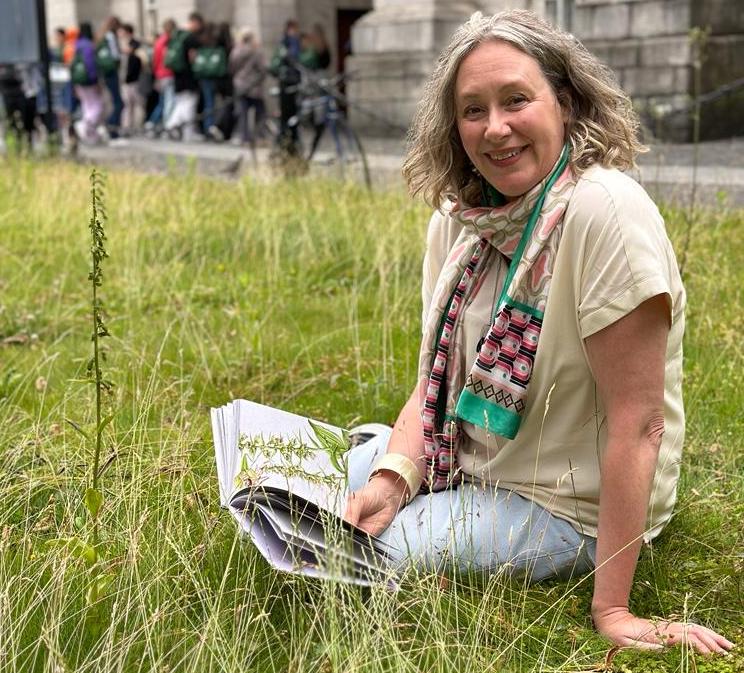A rare orchid has appeared on Trinity’s front square as a result of an initiative designed to allow wildflowers to bloom throughout the month of May.
Trinity stopped mowing several of its formal lawns across campus as part of the No Mow May campaign, an annual action started by Plantlife in the United Kingdom and promoted by the All-Ireland Pollinator Plan, co-founded by Professor Jane Stout, Trinity’s Vice President for Biodiversity and Climate Action.
Without the frequent mowing, wildflowers like clovers and daisies have bloomed, providing essential nutrients for pollinating insects, which are currently in decline.
Professor Jenny McElwain, Chair of Botany, spotted a broad-leaved helleborine orchid growing under a birch tree in Front Square. This type of orchid occurs across a wide geographic range but is never common in any one place.
The broad-leaved helleborine orchid is a woodland plant, although it can also be found in manmade environments, like parks and gardens.
Its roots are closely associated with ectomycorrhiza fungi, as its seeds need the fungi in the first few weeks to germinate and grow.
The fungal partner of this type of orchid is also a common partner of birch trees, which likely links the growth of this flower to its neighbouring tree via a threadlike underground fungal connection.
Botanists remain uncertain as to the origins of the orchids on campus.
In a press statement today, Professor McElwain explained that “the tiny dust seeds could have been transported by birds or humans or the wind”.
She continued, speculating that these orchids have possibly “simply been lying in wait, dormant in the soil for decades waiting to be given a chance to grow”.
Following the discovery of the helleborine orchid, Trinity has decided to extend the no mow period through June.
This has led to the discovery of a second orchid species nearby, the pyramidal orchid, whose predominant characteristic is its deep purple colour.
A botanical survey of the Front Square lawns carried out at the end of May found more than 30 different plant species blooming. This increase does not seem to be slowing, as more species are emerging every week.







